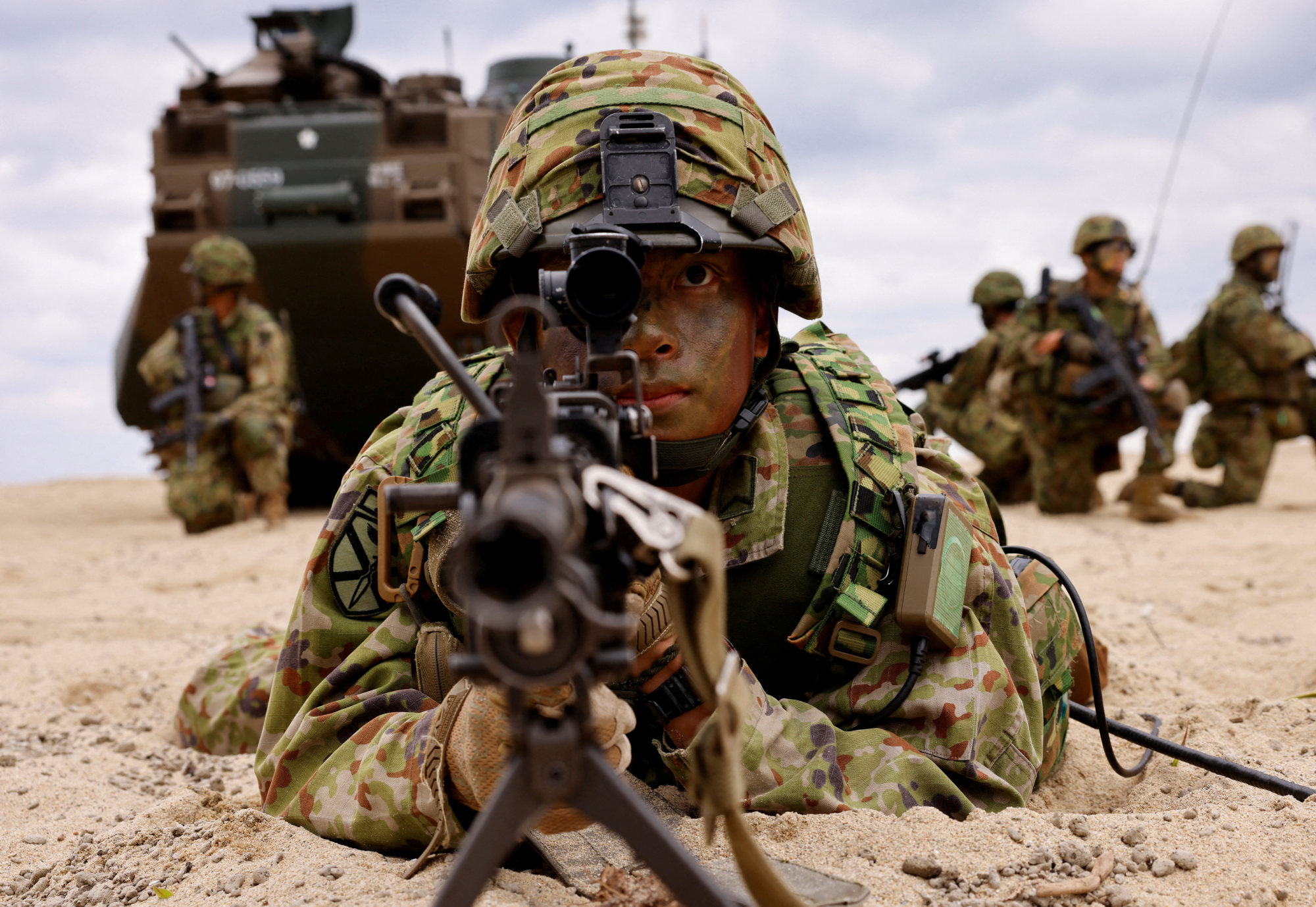
Japan plans more bomb shelters for outlying islands amid ‘growing concern’ over Taiwan tensions
- Design guidelines for bomb shelters are expected to be completed next month, while proposals for evacuation of residents on remote islands are also being drawn up.
- Officials are also identifying existing buildings on outlying islands to be modified to provide shelter and sufficient supplies for residents whose mobility may be limited
The Japanese government recently announced plans for the construction of bomb shelters on the outlying islands of Okinawa prefecture, spurred by the growing potential for conflict between mainland China and Taiwan.
Masafumi Iida, a leading China analyst at the National Institute for Defence Studies in Tokyo, told This Week in Asia there was “growing concern” in Tokyo that, should such a conflict break out, there is “only a small percentage of chance” that it would not involve Japan in some way.
National broadcaster NHK reported on Wednesday that design guidelines would be completed by the end of March before the proposals were presented to local governments. Basement levels of existing public facilities, such as schools, town halls and libraries, are likely to be the most appropriate venues.
Bunker mentality: Japan MPs push bomb shelters with eye on China, North Korea
Plans for shelters are in addition to proposals being drawn up for the evacuation of civilian residents of remote islands that have Japanese military facilities and might therefore become targets. Those plans, outlined in recent defence white papers, call for residents to be evacuated by sea or by air to the main Okinawa island and then to southern Kyushu.
Tokyo is concerned, however, that a sudden outbreak of hostilities involving Taiwan and close to Japanese islands such as Yonaguni – which is only 111km from Taiwan – would not give the Japanese authorities time to conduct an evacuation, meaning that residents would be required to shelter in place.
NHK reported that government officials had been examining existing structures on the islands and had identified robust concrete buildings that could be modified to provide shelter. Such buildings would be retrofitted with concrete walls at least 30cm thick to withstand missile and bomb blasts, and be equipped with independent power sources, communications systems and storage for food and medical supplies.
The proposal calls for every person to have 2 square metres (21.5 square feet) of space and for the supplies to be sufficient to support evacuees for up to two weeks.
“The government’s priority is to try to evacuate people who are living on the most remote islands and finally to transport them to Kyushu,” Iida said.
“But they are also planning to build shelters for those who are not able to move immediately,” he added. “Evacuating an island like Yonaguni would be very challenging, so a more realistic approach is needed.”

Some analysts have suggested that if China wanted to invade Taiwan, it would have no choice but to attack US military bases in Okinawa to neutralise the threat to the northern flank of any invasion fleet. Any attack on US bases would also be an attack on sovereign Japanese territory, Iida said, and would require a response.
“We are not predicting that China will attack,” he said. “But we do have to be prepared for the worst-case scenario.”
Garren Mulloy, a professor of international relations at Daito Bunka University and a specialist in military issues, said greater military infrastructure on Japan’s outlying islands was a double-edged sword and had caused divisions among local communities.
“The Japanese government has been building a greater military footprint on many of these islands and the positive impact is that it gives Japan greater contingency capability for the national and local government in the event of a natural disaster, in addition to its defensive role, and it has brought more people to communities that are facing the problem of depopulation,” he said.
On the other hand, he said, Ground Self-Defence Force (GSDF) documents leaked in 2018 detailed scenarios for conflict in the region and suggested that if Chinese forces were to carry out amphibious assaults on outlying islands and captured them, then Japan would have no choice but to retake the territory.
The immediate reaction from the public was that a re-run of the bloody 1945 Battle of Okinawa would be inevitable, Mulloy said.
“Local people were not particularly opposed to the GSDF before that as they knew the bases brought benefits, from grants to an influx of young people,” Mulloy said. “But the conversation then changes to the bases making their islands a target, which set alarm bells ringing and divided local opinions.”
Nevertheless, the local government on Yonaguni was shocked at the scale and intensity of Chinese military activity when then US House Speaker Nancy Pelosi visited Taiwan in August 2022. A series of military exercises around the island included the launching of cruise missiles, with at least five weapons falling within Japan’s exclusive economic zone off Yonaguni.
Immediately after those drills, the town began surveying the limestone caves that dot the island and were used by previous generations to provide shelter when the US began its assault on Okinawa in 1945.


